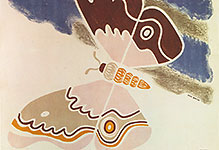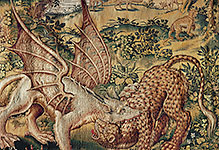
#03050245
Orpheus-mosaic,found in Palermo,Piazza della Vittoria, in Edifizio A,the seat o...

#03050265
Silver tetradrachm of Alexander the Great, mint of Amphipolis 336-323 BCE. The s...

#030503 1
Gold plaques showing Artemis as "Mistress of the Animals", Greek, Orientalizing...

#030503 7
Jug with a griffin-head spout, 675-650 BCE. Made on one of the islands of the Cy...

#030503 9
Black-figured "Siana" cup, Greek, 575-550 BCE. Both sides of this cup show activ...

#03050311
Red-figured rhyton (driking horn), signed by the potter Sotades, 470-460 BCE, fr...

#03050314
Perfume bottle (aryballos) with lion-head made in Corinth, Greece; Protocorinthi...

#03050317
Terracotta chariot group from tomb 93, Enkomi, Cyprus, Mycenean, ca, 1300 BCE. A...

#03050322
Bowl with basket-like handles and female heads on the rim, Greek, ca.600 BCE. Th...

#03050327
Pottery bowl decorated with a procession of riders in chariots, Mycenean, 1400-1...

#03050328
Vase decorated with bulls and birds, Mycenean, from tomb 83, Enkomi,Cyprus, 1300...

#03050330
Bowl with a Gorgon's head surrounded by prowling animals, from Kamiros, Rhodes,...






